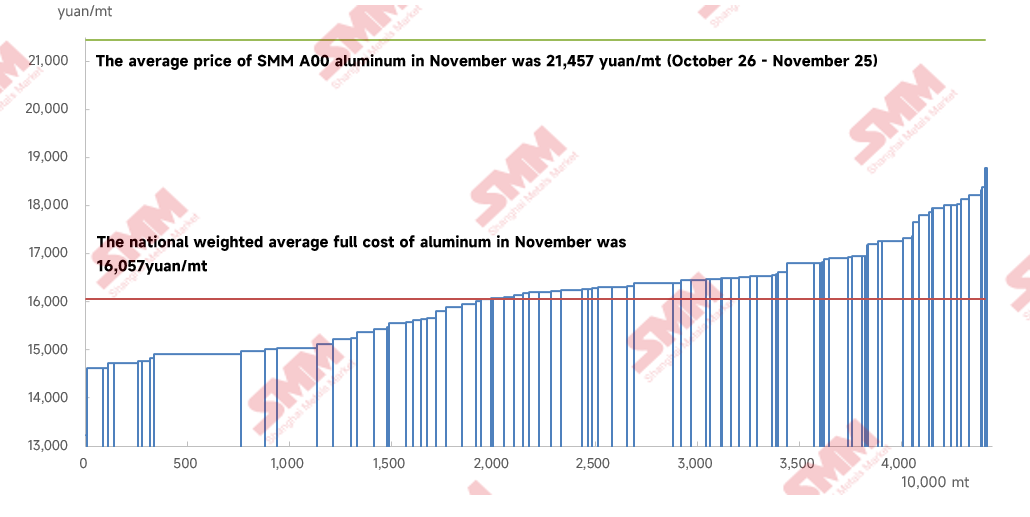WATCH: Controlled burn in Pocono Mountains preserves rare ecosystem – lehighvalleylive

Report on Prescribed Fire for Ecosystem Restoration and Sustainable Development at Long Pond Preserve
Introduction: Aligning Conservation with Sustainable Development Goals
A prescribed fire was conducted in Monroe County, Pennsylvania, to restore and maintain a unique terrestrial ecosystem known as mesic till barrens. This land management action, undertaken at The Nature Conservancy’s Long Pond Preserve, directly supports several United Nations Sustainable Development Goals (SDGs), primarily focusing on biodiversity, climate action, and collaborative partnerships.
- Objective: To burn 18 acres of the 400-acre preserve to reverse the effects of long-term fire suppression and maintain the fire-dependent barrens habitat.
- Historical Context: The procedure emulates the historical land management practices of indigenous peoples, which originally created and sustained this ecosystem.
- SDG Alignment: The initiative is a practical application of principles outlined in SDG 15 (Life on Land), SDG 17 (Partnerships for the Goals), and contributes to the resilience objectives of SDG 13 (Climate Action).
Strategic Objectives for SDG 15: Life on Land
The primary goal of the prescribed burn is to halt and reverse biodiversity loss by restoring a critical habitat. Decades of fire suppression have allowed over 70% of the original barrens to transition into forest, threatening the specialized flora and fauna that depend on this open ecosystem. This action directly addresses SDG 15’s target to protect, restore, and promote the sustainable use of terrestrial ecosystems.
Key Biodiversity Outcomes
- Habitat Restoration: The burn removes dense ground cover and fire-intolerant species, restoring the structural diversity necessary for the barrens ecosystem.
- Protection of Rare Species: The preserve is a known habitat for globally rare species. Management aims to support populations of 12 rare moth and butterfly species (Lepidoptera) identified in previous studies.
- Support for Flora and Fauna: The action promotes the growth of rhodora, ferns, and other vegetation that provides forage for white-tailed deer and habitat for caterpillars, a vital food source for migratory songbirds. It also protects a significant population of 519 white-fringed orchids.
- Regeneration of Fire-Dependent Species: The fire is essential for the life cycle of the pitch pine, whose cones are sealed with wax that melts in the heat, allowing for seed dispersal and regeneration.
Multi-Stakeholder Collaboration in Support of SDG 17: Partnerships for the Goals
The success of the operation exemplifies the effectiveness of multi-stakeholder partnerships, a core principle of SDG 17. The initiative was a collaborative effort that combined resources, expertise, and personnel from both non-profit and governmental bodies.
Participating Organizations
- The Nature Conservancy
- Pennsylvania Department of Conservation and Natural Resources (DCNR) Bureau of State Parks
- DCNR Bureau of Forestry
- Pennsylvania Game Commission
This partnership model is crucial for executing large-scale conservation projects, facilitating knowledge exchange, and achieving shared environmental objectives efficiently.
Operational Procedures and Community Safeguards (SDG 11 & SDG 3)
Meticulous planning was undertaken to ensure the safety of the crew and the surrounding community, aligning with SDG 11 (Sustainable Cities and Communities) by protecting local heritage and mitigating risks, and SDG 3 (Good Health and Well-being) through stringent safety protocols.
Safety and Planning Protocol
- Pre-Burn Preparations: Comprehensive weather analysis, selection of safety zones, and formulation of contingency plans were completed.
- Community Notification: County 911 dispatch and local fire chiefs were formally notified prior to the operation.
- Crew Safety: The team of approximately two dozen personnel was equipped with flame-resistant clothing, first aid supplies, and AEDs. Protocols for managing smoke exposure were established.
- Controlled Ignition: The fire was initiated using drip torches for precise application, following a successful test burn to evaluate conditions.
- Containment: Crews actively managed the fire’s perimeter, a practice known as “holding,” to ensure it remained within the designated 18-acre area and was extinguished upon reaching established firebreaks.
Projected Outcomes and Long-Term Impact
The prescribed fire yields immediate and long-term ecological benefits, demonstrating a tangible success story in conservation management. The results contribute to the ecosystem’s long-term health and resilience, a key aspect of climate adaptation strategies under SDG 13.
- Immediate Results: Within days of the burn, the blackened ground is expected to show new green growth. Birds are anticipated to forage on insects exposed by the fire.
- Ecological Regeneration: Pitch pines will exhibit epicormic budding, a stress response that promotes new growth directly from the trunk, ensuring the survival and dominance of this fire-adapted species.
- Sustainable Management: This burn is part of an ongoing management strategy to restore the natural fire cycle to the Long Pond Barrens, ensuring its survival for future generations and maintaining its role as a vital hub of biodiversity.
Analysis of Sustainable Development Goals in the Article
1. Which SDGs are addressed or connected to the issues highlighted in the article?
-
SDG 15: Life on Land
- This is the most prominent SDG in the article. The entire focus is on the protection, restoration, and sustainable management of a specific terrestrial ecosystem—the “mesic till barrens.” The article details efforts to combat land degradation (the transition of barrens into forest) and halt biodiversity loss by actively managing the habitat for rare plants and animals.
-
SDG 17: Partnerships for the Goals
- The article explicitly highlights a multi-stakeholder partnership to achieve the conservation goals. It describes a collaborative effort between a non-profit organization, The Nature Conservancy, and several public state agencies, including the “Pennsylvania Department of Conservation and Natural Resources Bureau of State Parks and Bureau of Forestry and the Pennsylvania Game Commission.”
-
SDG 13: Climate Action
- While not explicitly mentioned, the article’s subject matter is relevant to climate action. Prescribed burns are a key strategy for managing forest fuel loads, which helps prevent larger, more destructive wildfires. Such wildfires are becoming more frequent and intense due to climate change. Therefore, this activity contributes to strengthening resilience and adaptive capacity to climate-related hazards.
-
SDG 11: Sustainable Cities and Communities
- The article connects the land management practice to the safety of surrounding communities. It mentions that “notifications were sent out to county 911 dispatch and local fire chiefs” and that a “half-century of fire suppression on this land” was “associated with surrounding development.” This demonstrates an integrated plan for disaster risk reduction (wildfire prevention) to protect human settlements and infrastructure.
2. What specific targets under those SDGs can be identified based on the article’s content?
-
Targets under SDG 15 (Life on Land)
- Target 15.1: “ensure the conservation, restoration and sustainable use of terrestrial and inland freshwater ecosystems and their services.” The prescribed burn is a direct action to restore and sustainably manage the Long Pond Barrens ecosystem.
- Target 15.2: “promote the implementation of sustainable management of all types of forests.” The article describes the burn as a method to prevent the barrens from transitioning into a “fire-intolerant forest,” which is a form of sustainable ecosystem management.
- Target 15.5: “Take urgent and significant action to reduce the degradation of natural habitats, halt the loss of biodiversity and… protect and prevent the extinction of threatened species.” The project’s goal is to reverse the degradation of the barrens habitat to protect “12 globally rare moths and butterflies” and a thriving population of “white-fringed orchids.”
-
Target under SDG 17 (Partnerships for the Goals)
- Target 17.17: “Encourage and promote effective public, public-private and civil society partnerships.” The article is a case study of this target in action, describing the collaboration between The Nature Conservancy (civil society) and various Pennsylvania state bureaus (public) as “what the future looks like for us.”
-
Target under SDG 13 (Climate Action)
- Target 13.1: “Strengthen resilience and adaptive capacity to climate-related hazards and natural disasters in all countries.” The controlled burn is a proactive measure to manage the landscape and reduce the risk of uncontrolled wildfires, which are a significant climate-related hazard.
-
Target under SDG 11 (Sustainable Cities and Communities)
- Target 11.5: “significantly reduce the number of deaths and the number of people affected and… decrease the direct economic losses… caused by disasters.” By managing the ecosystem to prevent large-scale wildfires, the initiative directly contributes to disaster risk reduction for the nearby communities in Monroe County.
3. Are there any indicators mentioned or implied in the article that can be used to measure progress towards the identified targets?
-
Indicators for SDG 15 (Life on Land)
- Area of restored habitat: The article specifies the size of the operation: “18 acres” were burned as part of the larger “400-acre Long Pond Preserve.” This provides a direct quantitative measure of the land area under active restoration.
- Proportion of habitat degradation: The article provides a baseline by stating, “Over 70% of the original mesic till barrens have transitioned into fire-intolerant forest.” Progress can be measured by tracking the reduction of this percentage over time.
- Species population counts: The article mentions specific numbers that can be used as biodiversity indicators. These include the historical presence of “12 globally rare moths and butterflies” and a recent count of “519 white-fringed orchids.” Future counts can measure the success of the habitat management.
- Rate of vegetation regrowth: The article implies a short-term success indicator by noting that after a burn, “even within the next three days, we will see things start to green out here,” and that a parcel burned in June was “already thick with ferns and other plants.”
-
Indicators for SDG 17 (Partnerships for the Goals)
- Number and type of partners: The article identifies the specific partners involved: “The Nature Conservancy,” “Bureau of State Parks,” “Bureau of Forestry,” and the “Game Commission.” The existence and continuation of this multi-agency collaboration is an indicator of a successful partnership.
-
Indicators for SDG 11 & 13 (Sustainable Communities & Climate Action)
- Implementation of disaster risk reduction strategies: The successful and safe execution of the “prescribed fire, or controlled burn” is itself an indicator that a disaster risk reduction plan is being actively implemented.
- Frequency of management interventions: The article notes that the last burn on this specific parcel was in “2007.” The frequency of these controlled burns can serve as an indicator of ongoing commitment to wildfire risk management.
4. Summary Table of SDGs, Targets, and Indicators
| SDGs | Targets | Indicators |
|---|---|---|
| SDG 15: Life on Land |
|
|
| SDG 17: Partnerships for the Goals |
|
|
| SDG 13: Climate Action |
|
|
| SDG 11: Sustainable Cities and Communities |
|
|
Source: lehighvalleylive.com

What is Your Reaction?
 Like
0
Like
0
 Dislike
0
Dislike
0
 Love
0
Love
0
 Funny
0
Funny
0
 Angry
0
Angry
0
 Sad
0
Sad
0
 Wow
0
Wow
0

















































:focal(1500,1000)/https://media.globalcitizen.org/a6/9a/a69a4720-d8a1-4715-b596-18738d03c05c/rotary_polio_hero_image.jpg?#)






/countries/sri-lanka/photo-credit---dmc-sri-lanka.tmb-1200v.jpg?sfvrsn=dc298bcc_1#)
















